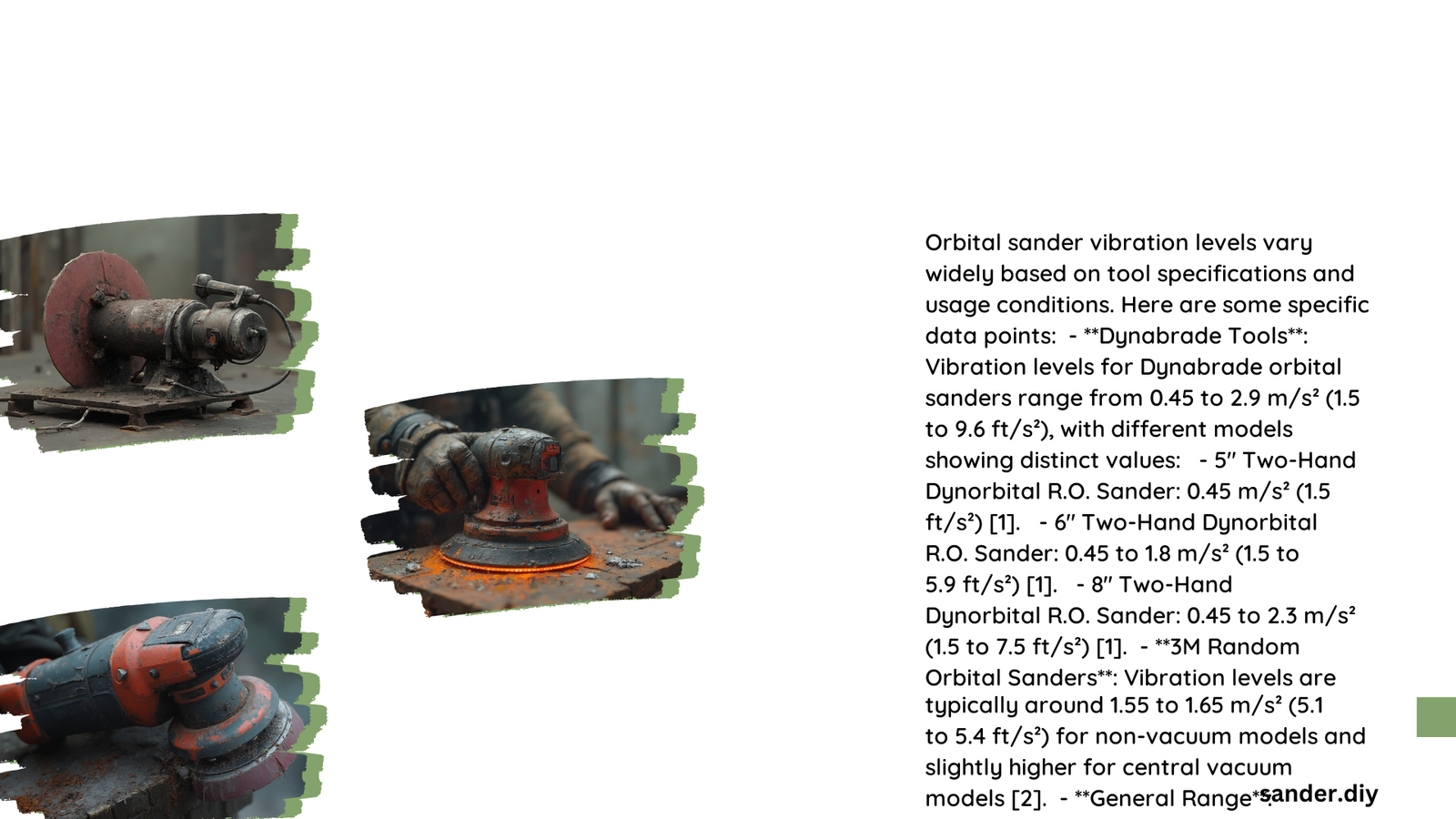Orbital sanders generate complex vibration patterns that significantly impact user comfort, tool performance, and potential health risks. Understanding orbital sander vibration levels is crucial for professionals and DIY enthusiasts, as vibration magnitudes ranging from 4 to 14 m/s² can affect precision, fatigue, and long-term hand-arm health. Proper measurement, reduction techniques, and awareness of vibration characteristics are essential for safe and effective sanding operations.
What Are Orbital Sander Vibration Levels?
Orbital sander vibration levels represent the acceleration magnitude of mechanical oscillations transmitted through the tool during operation. These levels are typically measured in meters per second squared (m/s²) and vary based on multiple factors:
- Tool Design: Different manufacturers produce sanders with unique vibration characteristics
- Motor Power: Higher-powered motors can generate increased vibration
- Sanding Surface: Material being worked on influences vibration intensity
How Do Vibration Levels Impact User Experience?
| Vibration Range (m/s²) | User Experience | Potential Risks |
|---|---|---|
| 0-4 | Low Discomfort | Minimal Health Concerns |
| 4-9 | Moderate Vibration | Potential Fatigue |
| 9-14 | High Vibration | Increased Health Risks |
| 14+ | Extreme Vibration | Significant Health Hazards |
What Factors Influence Orbital Sander Vibration?

Several critical factors contribute to orbital sander vibration levels:
- Motor Configuration
- Direct-drive motors typically generate more consistent vibrations
-
Gear-driven systems can introduce additional mechanical oscillations
-
Sanding Pad Condition
- Worn or unbalanced pads increase vibration
-
Regular maintenance reduces unexpected vibration spikes
-
Operational Technique
- Excessive pressure increases vibration magnitude
- Proper technique minimizes unnecessary tool stress
How Can Vibration Levels Be Measured?
Precise vibration measurement requires specialized equipment:
- Accelerometers: Provide detailed vibration frequency and magnitude data
- Vibration Meters: Offer quick, on-site measurements
- Professional Diagnostic Tools: Comprehensive analysis of tool performance
What Are Safe Vibration Exposure Limits?
Occupational safety guidelines recommend:
- Daily Exposure Limit: Below 2.5 m/s² (A(8) value)
- Maximum Recommended Duration: Depends on vibration intensity
- Mandatory Breaks: Recommended for prolonged use of high-vibration tools
Strategies for Reducing Orbital Sander Vibration
Effective vibration management involves:
- Anti-Vibration Handles
- Dampening Technologies
- Regular Tool Maintenance
- Ergonomic Work Practices
Recommended Protective Measures
- Use vibration-dampening gloves
- Take frequent breaks
- Maintain tools regularly
- Select low-vibration sanders
- Monitor personal exposure levels
Technical Recommendations for Professionals
- Conduct periodic vibration assessments
- Train workers on proper tool handling
- Invest in modern, low-vibration equipment
- Implement rotation strategies to minimize individual exposure
Conclusion
Understanding and managing orbital sander vibration levels is crucial for maintaining workplace safety, tool performance, and user health. By implementing comprehensive measurement, reduction, and protection strategies, professionals can minimize potential risks associated with tool vibrations.
